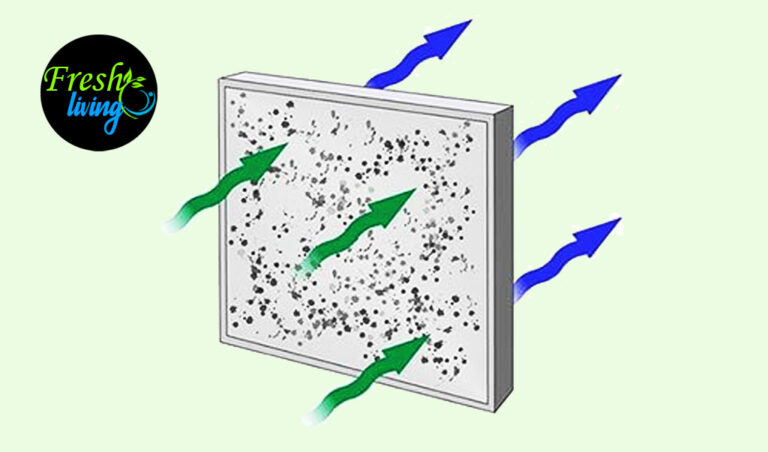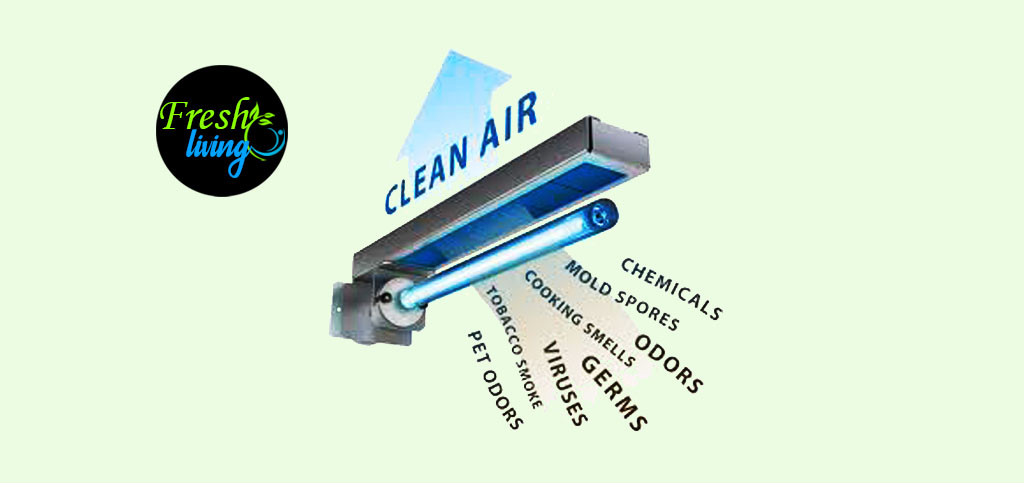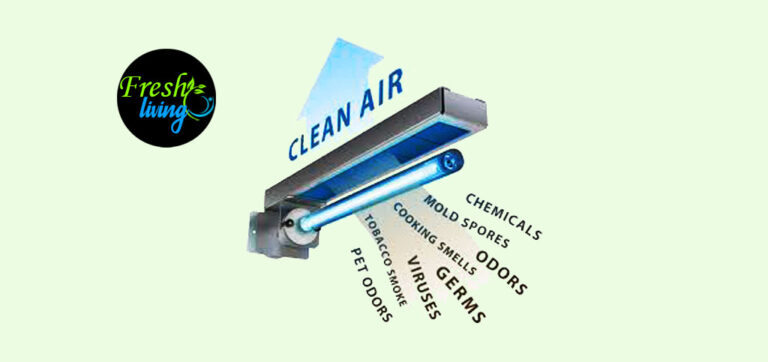Air pollution is growing at an alarming rate, globally. No matter where we are, the air around us is no longer completely free of dust and smoke. It contains harmful chemicals and microorganisms that have the potential to make us seriously ill.
As the causes of air pollution continue to rise, people in urban areas are increasingly turning to air purifiers and air conditioners to secure their living spaces. These appliances remove microscopic pollutants from the air and make it safer for respiration. In this article, we are going to learn about the different filters used in air purifiers and air conditioners. We will study how they are made and their uses. We will also take a look at the mechanisms behind these filters and how they purify air.
Table of Contents
What is an air filter ?
An air filter is a device made of porous or fibrous materials which trap solid, liquid and gaseous particles suspended in the air. The particles can be living or non-living, organic or inorganic. They can have diameters of less than a micron (micrometer) to more than a hundred micron. Air filters are used in home and car air purifiers.
An air filter can be active or passive. An active air filter directly acts upon air pollutants, and destroys or de-activates them. A passive air filter captures pollutants with the help of a filtration panel, and prevents them from freely drifting in the room air. The best air purifiers in the market use a combination of active and passive methods to purify air.
MERV Rating :
Before we discuss the different types of air filters, it is imperative that we talk a little bit about MERV rating. MERV is an acronym for Minimum Efficiency Reporting Value. It is a measurement scale for rating the particle-filtering capacity of air filters. It was conceptualized and developed by the American Society of Heating, Refrigerating and Air-Conditioning Engineers (ASHRAE). Today, almost all applications involving air filters use this scale to measure the effectiveness of air filters. The following table shows the MERV ratings for different particle sizes.
| MERV rating | Minimum particle size (in micron) | Pollutants intercepted | Applications |
| 1 to 4 | > 10.0 micron | fabric fibers, dust, pollen, sand, spray paint dust | HVAC units |
| 5 to 8 | 10.0–3.0 micron | spores, pet dander, dust mites, dust mite feces, aerosol mist | HVAC units |
| 9 to 12 | 3.0–1.0 micron | vehicular smoke, lead dust, humidifier dust, particulate matter | HVAC units in hospitals and sensitive work places |
| 13 to 16 | 1.0–0.3 micron | bacteria, particulate matter, most smoke, most paint pigments, cooking oil droplets | Operation Theatre, Intensive Care Unit |
| 17 to 20 | < 0.3 micron | smoke, bacteria, viruses, carbon dust | Electronics, pharma labs, cleanrooms, pathology research centers |
Types of Air Filters :
HEPA Filter :

HEPA stands for High-Efficiency Particulate Arresting (or Absorber). It is the most advanced type of air filter used in air purifiers. It is the only filter that can remove particles as small as 0.3 micron. It has a high filtration rate. It can eliminate up to 99.97% airborne allergens from an enclosed area.
The primary job of HEPA filters is to lower particulate matter pollution. Particulate matter is a group of suspended microscopic solid and liquid particles. PM 2.5 and PM 10 are the 2 most critical categories of particulate matter. Examples of particulate matter are vehicular smoke, smog, cigarette smoke, fly ash, soot, bacteria, viruses, pollen, fungal spores, dust mites, dust mite feces, pet dander, fine suspended dust, heavy dust, cement dust, and oil smoke.
How a HEPA filter works ?
A HEPA filter is a mat of randomly arranged fiberglass fibers. It is in the form of a continuous sheet pleated many times over. Each fiber has a diameter of 0.5 to 2.0 micron. The distance between two adjacent fibers is greater than 0.3 micron.
The filter captures passing air pollutants through a combination of three methods: interception, impaction and diffusion. In interception, a particle sticks to a fiber when it comes within one radius of the fiber. In impaction, a large particle gets embedded in a fiber when it fails to navigate the curving route of the air stream around the fiber.
Impaction intensifies as the gaps between the fibers close and the air velocity increases. In diffusion, particles get trapped in the mat when they collide with gas molecules. Pollutants with diameters less than 0.1 micron are mostly eliminated through diffusion. Interception and impaction eliminate larger pollutants, particularly those bigger than 0.4 micron. A HEPA filter should be replaced once every six months.
Uses of HEPA filter :
HEPA filters are predominantly used in domestic and industrial air purifiers, vacuum cleaners and air conditioners. They are used in aircraft air purification systems to prevent the spread of germs in re-circulated cabin air. They are also used in biomedical applications to fight bacterial and viral infections. HEPA filters are allergy and asthma-friendly. They help check allergic reactions and asthmatic attacks.
Activated Carbon Filter :

Activated carbon is carbon that has been treated with jets of hot air, steam or carbon dioxide in order to increase its surface area and makes it more porous. Treating carbon in this manner makes it perfect for trapping organic gaseous and liquid particles present in the air.
Carbon already occurs naturally in the form of a web or trellis of inter-connected carbon atoms. When jets of air and steam are passed through it, millions of tiny pores develop between the carbon atoms, increasing the surface area of the metal exponentially.
How activated carbon works :
Activated carbon attracts atoms and molecules of gases and liquids through a process known as adsorption. Adsorption is a surface phenomenon which causes gaseous and liquid compounds to adhere to the surface of a solid in a random fashion. In activated carbon, carbon is the absorbent and the particles it attracts are the absorbate.
When air is passed through an activated carbon filter, the organic particles suspended in the air stick to the surface of the carbon atoms and are separated from the air stream. The process is aided by the extra surface area of the absorbent which provides more active bonding sites for the absorbate to stick to.
Uses of activated carbon filter :
Activated carbon removes unpleasant odors, cooking smells and toxic gases. Most importantly, it removes VOCs. VOCs are a group of chemicals released by household products like cleaning supplies, paints, adhesives, polythene bags, deodorants, synthetic fabrics, scented personal care products and plywood furniture. Examples of VOCs are formaldehyde, ammonia, benzene, toluene, xylene and acetone.
Activated carbon filters are used in air purifiers, air conditioners, kitchen exhaust systems and vacuum cleaners. They are used in domestic and industrial applications in a wide range of sectors like consumer appliances, pharmaceuticals, FMCG, automobile and chemical plants. Activated carbon filters are recommended for people with Multiple Chemical Sensitivity (MCS).
Ultra Violet (UV) light :

UV light is a part of the electromagnetic spectrum with a wavelength of 10 to 400nm (nano meter). It lies between visible light and X-Rays. It is shorter than visible light and longer then X-rays. UV light is hotter and has more energy than visible light. It cannot be seen with the naked eye but is extremely powerful. It is mutagenic to living microorganisms like bacteria and actively destroys allergens.
How UV light works ?
UV light air purifiers normally consist of a stick light bulb or a UV light lamp emanating UV light. As the room air is drawn into the purifier, the UV light from the lamp acts upon the bacteria, viruses, protozoa, pollen and mildew spores present in the air current. It either completely burns the microbes, or it alters the genetic makeup of the organisms, leaving them incapable of reproducing. With their nucleic acid irreversibly changed, the pathogens are prevented from multiplying and causing infections. It also inhibits mould and mildew from spreading on books, fabric, leather and wood.
UV light can be classified into 3 main types: UV-A, UV-B and UV-C light. The first two types are emitted by the sun and are harmful for humans. They can cause sun burns, allergies and cancer of the skin. The third type, UV-C light, doesn’t harm humans, but is fatal for living microorganisms. It is used in air purifiers for killing germs and sanitizing air.
UV lamps become less effective with use. Their efficiency goes down by an average of 15% annually.
Uses of UV light :
UV light is used for sterilizing germs in sterile work places like hospitals. It is commonly used in domestic and industrial HVAC (heating, ventilation and air conditioning) systems. It plays a central role in practically every major industry including pharmaceutical, healthcare, nuclear power, microbiology, biotechnology, food & beverages, and chemical.
Studies have found UV light to be extremely effective in controlling the spread of infections in intensive care units in hospitals. It has also proven to be highly effective in fighting fungal contamination in air handling units. UV light is perfect for humid climates as it fights mould. It also controls bad odors and VOCs.
Ionic Air Purifier or Ionizer :
An ionizer is a device that relies on electrostatic energy to control air pollution. It is used for countering dust, bacteria, cigarette smoke and pet dander. It actively targets air pollutants and inhibits their growth by neutralizing them.
How an ionizer works :
An ionizer produces millions and millions of negatively charged ions called anions. These ions attract positively charged air pollutants like gas molecules, dust, pollen, spores and bacteria. They form bonds with the pollutants, and becoming too heavy to remain afloat, fall down to the ground or settle on surfaces around the room. The settled debris is then pulled into the air purifier and filtered out with the help of charged collection plates. The remaining dirt sticking to walls, floors and furniture can be cleaned through dusting, mopping and vacuuming.
Uses of an ionizer :
Ionizers are commonly sold as ionic air purifiers. They are built into domestic and commercial air cleaning appliances. Hospitals and pathology laboratories use ionic air filters to combat bacterial growth and contagious diseases. Studies have found ionizers to be effectual in lowering salmonella outbreaks and other air-mediated infections.
Another benefit of negative ions is that they promote a sense of well-being. They help relieve stress, fatigue and depression. They improve sleep and keep us energized throughout the day. Negative ions occur naturally in places where the air is constantly in an agitated state. They are found in abundance near waterfalls, seas, oceans, streams and mountains. An ionic air purifier replicates this natural phenomenon and rejuvenates your home environment with negative ions.
Photo Catalytic Filter :
A photo catalytic air filter relies on a chemical reaction called photo catalytic oxidation or PCO. It is used in air purifiers to fight indoor pollution. It eliminates VOCs, vehicular fumes, cooking smoke and other allergy-inducing particles.
How a photo catalytic filter works ?
In photo catalysis, a catalyst, typically titanium dioxide, is exposed to UV light which results in the expulsion of electrons from the catalyst. These electrons react with moisture in the air and break up water molecules into hydroxyl radicals and hydrogen atoms.
Hydroxyl radicals are highly volatile and reactive. They react with large carbon-based pollutants and convert them into harmless compounds like carbon dioxide and water. In other words, the filter permanently alters the chemical composition of organic pollutants, transforming them from harmful to harmless particles.
Uses of photo catalytic filter :
PCO filters are used in all kinds of air purification systems. They have a wide range of domestic and industrial applications.
Electrostatic Filter :
An electrostatic filter is based on the principle of static electricity. When air molecules rub against the filter medium, it produces friction which makes the air pollutants present in the air current adhere to the filter.
How an electrostatic filter works ?
An electrostatic filter is a mat of fibers with multiple layers. When air passes through the mat, it generates electrostatic charge through friction. This causes the suspended particles to stick to the fibers and separate from the air. The dust collected in the mat can be washed off and the filter can be reused. Recommended cleaning frequency is once every 4 to 6 weeks.
Uses of electrostatic filter :
Electrostatic filters are widely used in air purifiers and air conditioners. They have a particle arresting capacity of 82 to 94%. They are instrumental in rooting out positively charged particles like pollen, fungal spores, dust mites, pet hair and lint. A typical filter can last for years if maintained well.
Nano Silver Filter :
Nano silver filters are used for inhibiting bacteria. Silver is known for its anti-microbial quality and nano silver filters harness this quality if silver to counter bacterial growth.
How a nano silver filter works ?
A nano silver filter releases silver ions which attack bacteria, sterilizing them and preventing them from breeding. It also destroys fungal spores, pollen, vermin and viruses. It prevents infections, allergies and mildew.
Uses of nano silver filter :
Nano silver filters are used in home air conditioners and air purifiers. They can neutralize up to 600 different kinds of bacteria. They kill germs that escape the other filters in the appliance like HEPA and anti-microbial filters.
Catechin Filter :
Catechin is a naturally occurring phenol and antioxidant found in tea, cocoa and pome fruits like apple. It has anti-bacterial and anti-viral properties. It destroys bacteria and prevents foul odors.
How a catechin filter works ?
Catechin is extracted from green tea and applied to air filters. When air passes through the catechin-infused filter, bacteria and odor molecules present in the air stream are neutralized. Catechin also removes pet dander, pet odors, cooking odors and cigarette smoke.
Uses of catechin filter :
Catechin filters are used in ACs and air purifiers as pre-filters. They are washable, reusable and long-lasting.
Vitamin C filter :
Vitamin C plays a key role in the synthesis of collagen and elastin, both of which are vital for healthy glowing skin. Vitamin C moisturizes the skin, and keeps it soft and supple. AC and air purifier brands are increasingly turning to vitamin C-infused air filters to market their products as skin-friendly.
How a vitamin C filter works ?
Filters treated with vitamin C provide healthier air. They prevent the skin from drying and itching. Generally, a ceramic additive is added to the filter which releases vitamin C when it comes in comes in contact with water vapor in the air. In the absence of moisture, when the climate is too dry such as in winter, Zeolite (a moisture absorbent added to the filter) provides a steady supply of vitamin C.
Uses of vitamin C filter :
Vitamin C air filters can be seen in home and car air conditioners. They are also used in air purifiers for keeping the skin hydrated.
Anti-bacterial Filter :
Anti-bacterial air filters inhibit microbes like bacteria, viruses, spores and pollen. They are used to control the spread of germs and diseases.
How anti-bacterial filter works ?
An anti-bacterial filter consists of a dense mesh of fibers treated with an anti-microbial agent. The fibers are pleated to enhance their filtration efficiency and the mesh is thermally glued to a metal frame to keep it from sagging. When air moves through the filter, the microorganisms present in the air are retained in the filter medium where the anti-microbial agent acts upon them, neutralizing them permanently.
Uses of anti-bacterial filter :
Anti-bacterial air filters are widely used in HVAC systems, furnaces, air purifiers and car air conditioners. They are installed in sterile work places like intensive care units, operation theaters, pharmaceutical plants and laboratories. A standard anti-bacterial filter lasts 3 to 6 months after which it needs replacement.
Pre-filter :
A pre-filter is the first filter the air goes through when it enters an air purifier. It does the preliminary screening, taking out large particles like human air, fur, pet dander, pollen, dust and sand. It mostly tackles PM 10 contaminants and prevents them from getting to the inner, more expensive, filters like HEPA. The pre-filter prolongs the life of the other filters in the appliance and maintains the efficiency of the machine. It keeps the advanced filters from getting clogged with coarser debris and helps them perform at their most optimal levels.
Uses of pre-filter :
Pre-filters have diverse uses. As their main job is to remove coarse particles, they are used in applications that seek to improve the quality of air. Hence, they are routinely used in air purifiers, vacuum cleaners and air conditioners.
How a pre-filter works ?
A pre-filter can be made of fiberglass, fabric or paper. It is usually in the form of a sheet. Most pre-filters are washable and reusable.
There are 2 main types of pre-filters:
- Fiberglass filter
- Pleated filter
Fiberglass Filter :
Fiberglass filters are used for removing large debris like lint, sand, dust, and human and animal hair. They are cheap and disposable air filters. They can be purchased in department and hardware stores.
How fiberglass filter works ?
Fiberglass filters are made of spun glass and are reinforced with metal grating. They have a MERV rating of 1 to 4. They intercept coarse dust in the initial stage of air purification. Most fiberglass filters have a lifespan of 30 days. They must be replaced on time to prevent dust from building up inside the house. Failure to replace a saturated fiberglass filter can result in breathing problems and allergies.
Uses of fiberglass filters :
Fiberglass filters are used in domestic and commercial furnaces and HVAC systems. They intercept larger particles before they could get to the inner, more sophisticated, filters.
Pleated Filters :
Pleated filters are a more advanced version of fiberglass filters. They are a step up from fiberglass filters with a higher airflow resistance. They trap more particles than fiberglass filters and protect the inner filters.
How a pleated filter works ?
A pleated filter is tighter than a fiberglass filter with narrower gaps in between the fibers. It has a higher dust-removing capacity, but it comes at a cost. It puts more stress on the purifier’s motor, gradually lowering its efficiency over time. On the bright side though, you get fresher and cleaner air, and your home stays dust-free. Pleated filters successfully intercept dust, lint, pet dander, hair, pollen and sand from the indoor air. They are available in washable and disposable variants.
Uses of pleated filters :
Pleated air filters are used in both furnace and HVAC systems. They are built into air purification units and air conditioners. They usually have a MERV rating of 10 to 13. They are suitable for people with skin allergies and respiratory disorders like asthma. Pleated filters are more expensive than fiberglass filters.
Tips : Know what are the factors to check before buying an air purifier.
